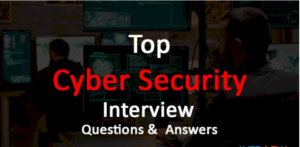Companies can obtain threat intelligence from a variety of sources, each of which has unique advantages for the company. All of this data is compiled into a single system by a threat intelligence platform (TIP), which helps the company derive actionable insights from the information. Check out the online cyber security training to learn more.
The Importance of Having a Threat Intelligence Platform
Businesses must contend with a wide range of quickly changing cyber threats. Cyber threat actors are always in the process of creating new instruments and strategies to go beyond the security measures that companies have put in place. A ransomware attack, data breach, or other detrimental security incident for a business could be considered a success.
Threat information gives businesses insight into the newest attack campaigns and trends in the cyber threat landscape, allowing them to anticipate and avert attacks. However, analysts find it challenging to manually assess threat data and derive insights quickly enough to be useful due to the sheer amount of available data.
Threat intelligence data collection, analysis, and distribution are all automated by a TIP. An organisation can make sure that its defences are utilising the best data available to detect and thwart possible assaults by utilising a TIP.
How Threat Intelligence Platforms Work
Platforms for threat intelligence are in charge of compiling and evaluating threat data in order to derive insightful information. Among the crucial actions in this procedure are:
- Data Collection and Aggregation: Threat intelligence is typically available to organisations through a variety of internal and external sources. In order to provide a more comprehensive and contextual picture of the cyber threat landscape, a TIP will gather information from all of these sources.
- Normalisation and Deduplication: Data from threat intelligence sources can include redundant information and be presented in a number of ways. Duplicate data can be eliminated thanks to normalisation, which converts gathered data into a standard format.
- Processing: TIPs analyse the information they have gathered to provide the company with insightful analyses and reports. TIPs have the potential to produce indicators of compromise (IoCs), which can facilitate an organisation’s ability to promptly detect possible attacks.
- Integration: Next-generation firewalls (NGFWs), endpoint detection and response (EDR), extended detection and response (XDR), and security information and event management (SIEM) systems are just a few examples of the security architecture components that TIPs can be integrated with. IoCs may be quickly deployed to systems using this connection, allowing them to thwart assaults and alert security staff to critical dangers.
- Analysis: Users should be able to obtain and view data in an intuitive manner with a TIP. A TIP should support questions and be able to produce custom or pre-made reports to satisfy different stakeholders’ demands.
Key Features of a Threat Intelligence Platform
A TIP should possess a few essential qualities, such as the following:
- Multi-Source Intelligence: Using a variety of threat intelligence sources increases an organisation’s awareness of the cyber threat landscape and lowers the likelihood that a threat will go unnoticed. Threat intelligence data should be gathered by a TIP from many sources and supported in a range of data formats (JSON, STIX, Excel, etc.).
- Data analytics: Threat intelligence feeds may contain a high proportion of false positives or duplicate data points, and security teams frequently deal with data overload. To improve the quality of the data and separate relevant information from the vast amount of data, a TIP should automatically process the data.
- Solution Integration: In order to reduce the expenses and effects of a cybersecurity event on a company, quick action is necessary. Threat intelligence can be quickly distributed by a TIP that interfaces with other corporate security solutions, optimising the value it offers.
Who Uses a TIP?
A TIP can be a very useful tool for many different functions inside the company. Among the positions that could benefit from a TIP are:
- Security Operations Center (SOC) staff are in charge of handling incident response and spotting possible threats to the company. The ability of SOC teams to spot novel exploits is improved by threat intelligence.
- Security Analyst: To plan and set up an organisation’s defences, security analysts employ a variety of data sources. Threat information sheds light on the kinds of attacks that these systems need to fend off.
- The Incident Response Team (IRT) is in charge of handling security incidents and getting the organisation back up and running. Remedial actions are aided by knowledge of a threat’s mechanisms and consequences on organisational systems.
- Management: The organisation’s security investments are one of the strategic decisions that fall under the purview of executive management. Developing an organisation’s security plan requires a thorough grasp of the cyber threat landscape.
Conclusion
To learn more about Threat Intelligence Platforms (TIPs), check out the online cyber security course.



























